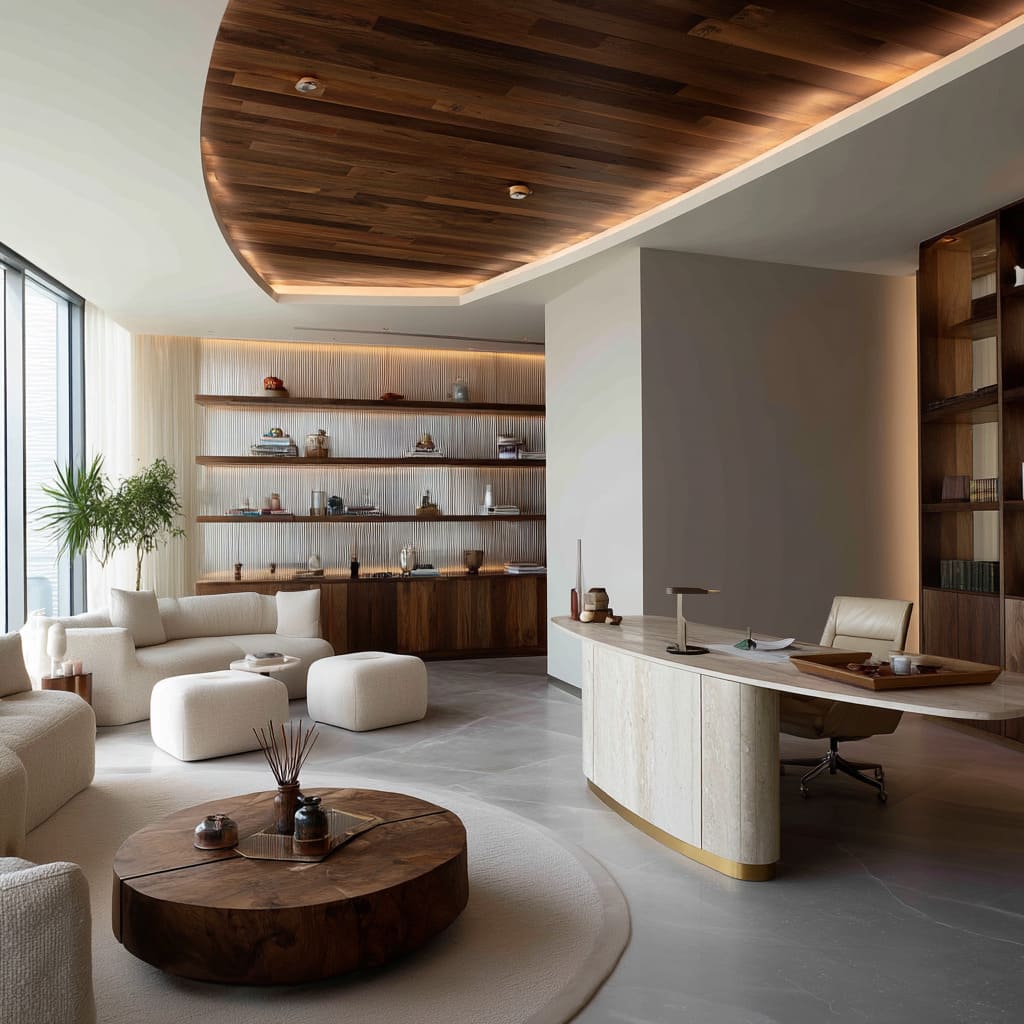
In Dubai’s modern executive offices expresse through exacting materials and surfaces that feel permanent—like travertine, dark walnut, brushed brass, or ribbed stone. The approach stays consistent: create presence without noise. These offices are shaped for those who lead through control, not spectacle. Walls feel weighty, desks are sculptural, and lighting is embedded—never showy. Power here is about self-command and spatial clarity, not attention. The choices reflect a CEO office design philosophy grounded in confidence and permanence, rather than display.
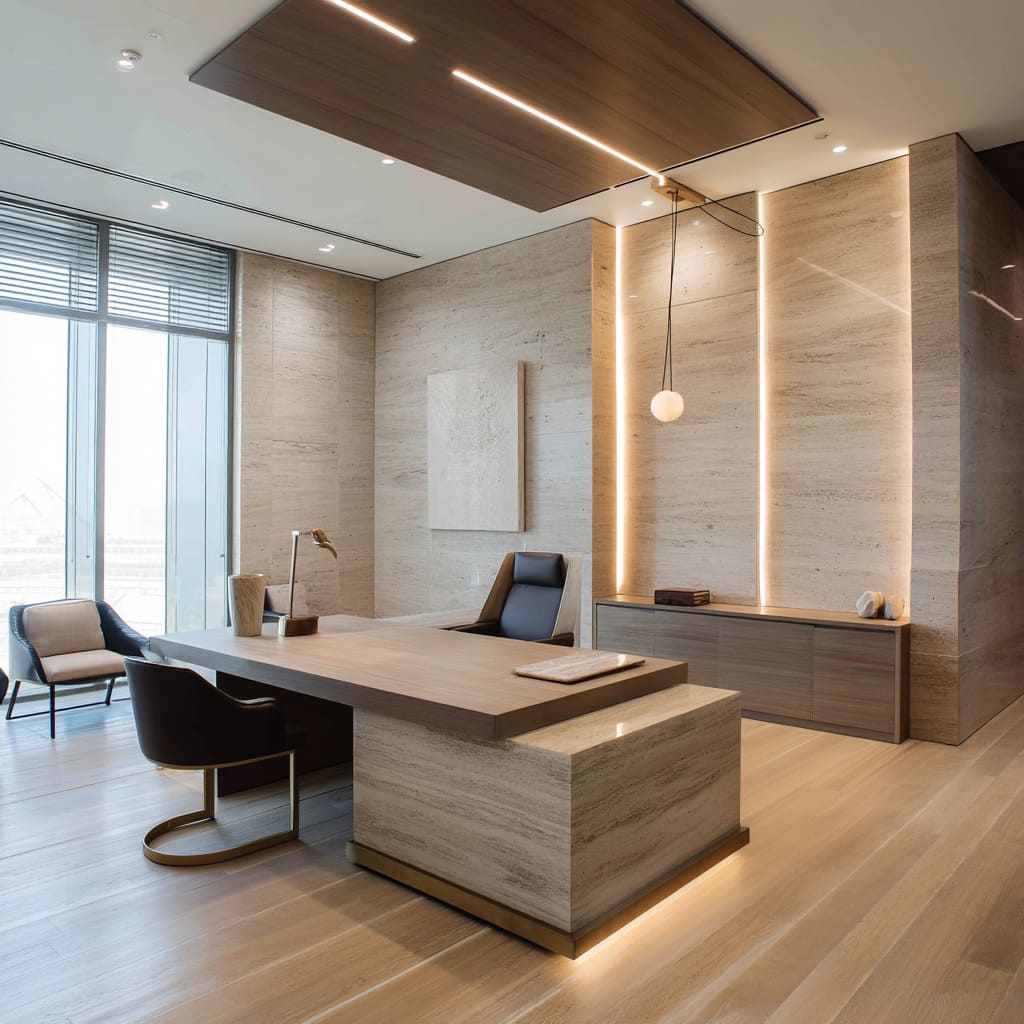
Architecture Is Performing As Furniture
In high-level office design in Dubai, surfaces aren’t just boundaries—they take on active roles. Ceilings curve to signal circulation, like walnut panels that gently arc above a work zone. Floors shift tone or material to define purpose without needing partitions—subtle rug transitions or inlaid strips of stone organize space like lines on a floor plan. Even walls become hybrid elements, mixing vertical paneling with recessed lighting and shelving in one continuous visual rhythm. These elements do more than decorate; they help choreograph movement, set mood, and hint at how each corner of the room should function.
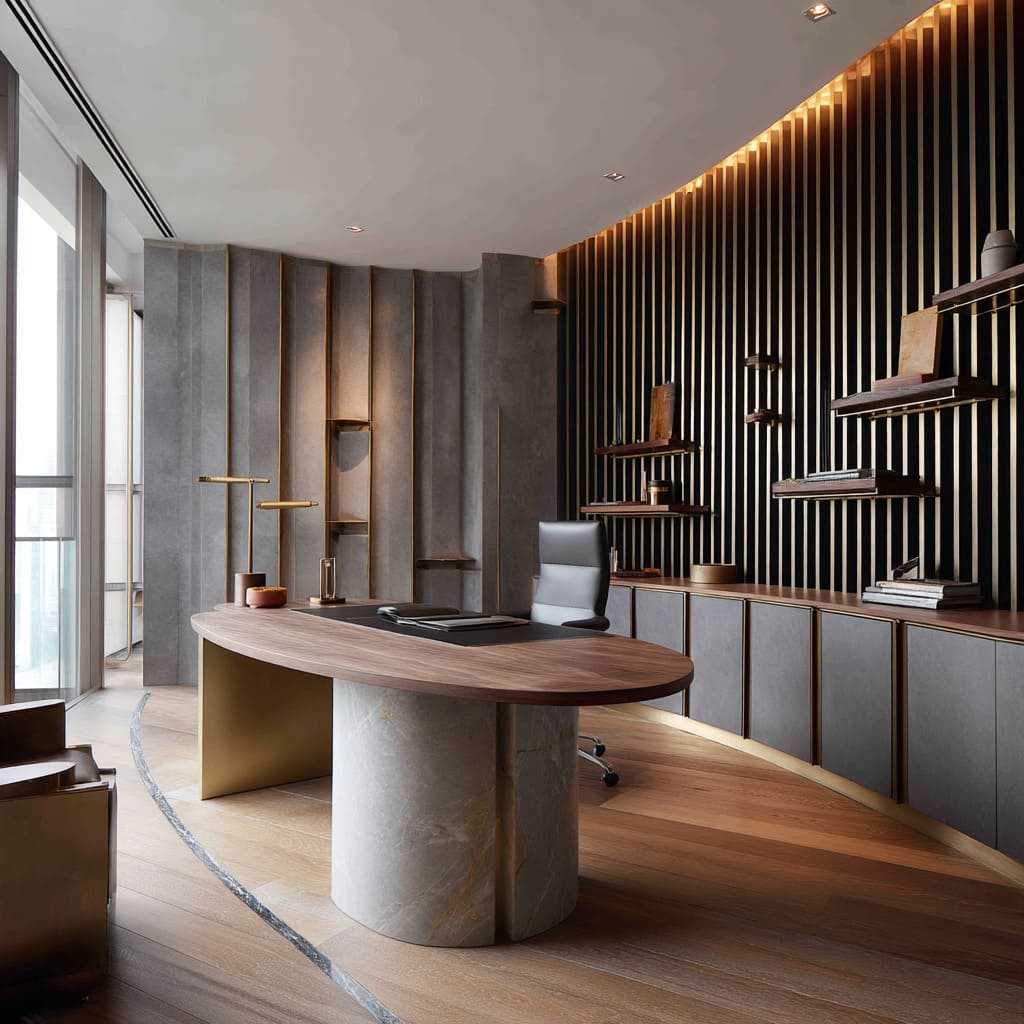
Curves in CEO Spaces Reflect Strategic Softness
Curved desks aren’t simply a visual choice. They reshape interaction. A rounded front invites approach, lowers formality, and softens the posture of the space. In rooms built for sharp decisions, the absence of hard desk corners creates a more fluid environment for dialogue. It’s a visual sign that while the CEO holds authority, the space is also designed for exchange and consideration. This approach reveals how luxury office design is adapting to newer expectations—where strong leadership includes a more open and conversational design tone.
Hospitality Cues Replace Corporate Rigidity
The seating areas look less like typical boardroom arrangements and more like private hotel lounges. Chairs are low-backed and curved, tables are sculptural, and the use of textured upholstery (like boucle or soft camel leather) adds warmth without sacrificing formality. It’s a deliberate merging of professional and personal comfort. This blending shows how Dubai office design is moving toward a hybrid model—where the office isn’t just about work but about hosting, reflecting, and controlling presence. It’s no coincidence that this mix of hospitality influence with executive function is becoming more common across high-rank offices in the region.
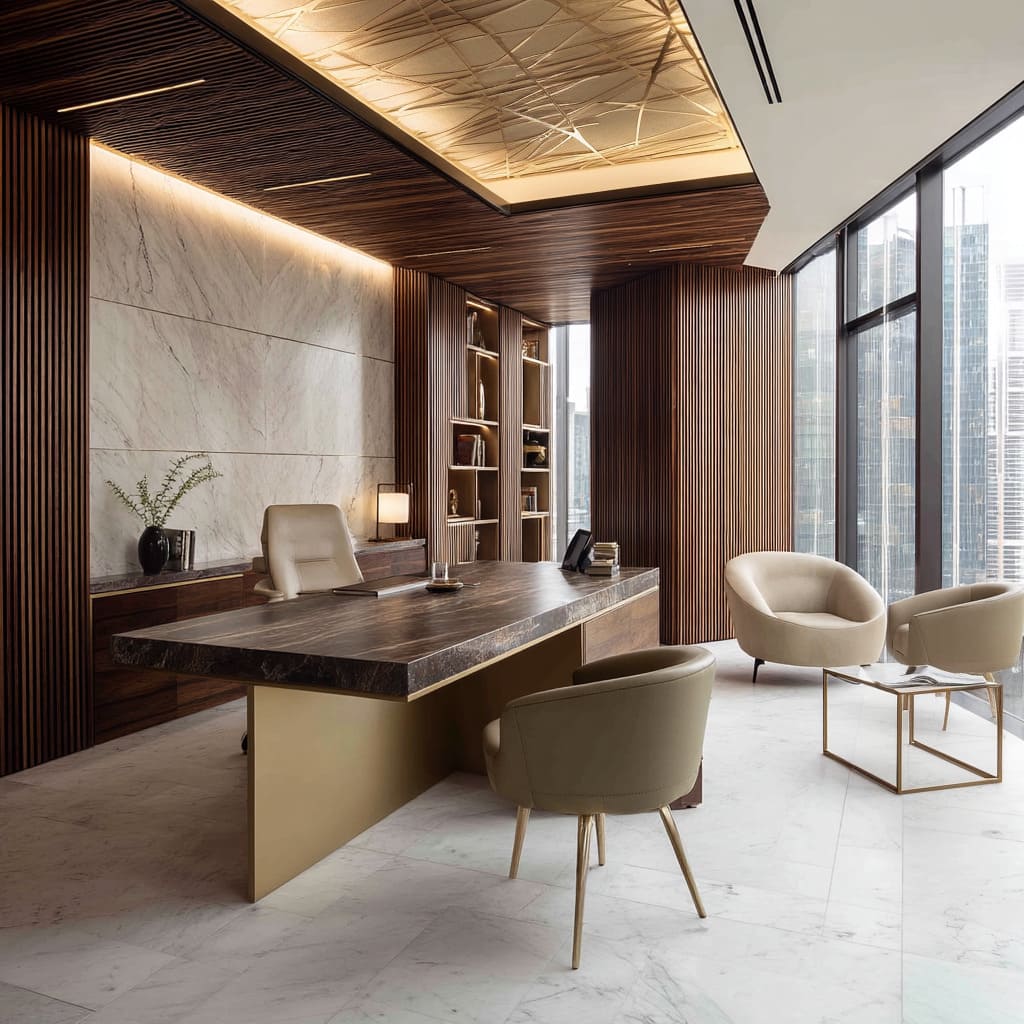
Textural Gradation
Materials in each space follow a silent hierarchy that affects behavior. Hard elements—like stone or metal desk surfaces—anchor the workspace with weight and structure. Around these are smoother transitions: wood, soft leather, boucle chairs, and finally, light-filtering window drapery. This intentional sequence isn’t random. It eases the sensory environment and subtly shifts the experience from control to contemplation. Harder areas hold the desk and decision-making. Softer areas host conversation. And diffuse surfaces—like sheer curtains or circular rugs—signal zones for pause, thought, or visual rest. The mental zoning is invisible but deeply effective.
Shelf Styling as a Visual Manifesto
Objects displayed on wall shelves are more than visual fillers. No shelf is overloaded; instead, each item is placed with noticeable space around it, often mixing materials—rough clay, aged books, polished stone. This negative space suggests deliberate thought, not clutter. In Dubai’s high-end corporate settings, where leaders often move across international and cultural spaces, these choices speak. They hint at education, discretion, awareness. Each item is doing quiet work, setting tone for visitors without needing a word.
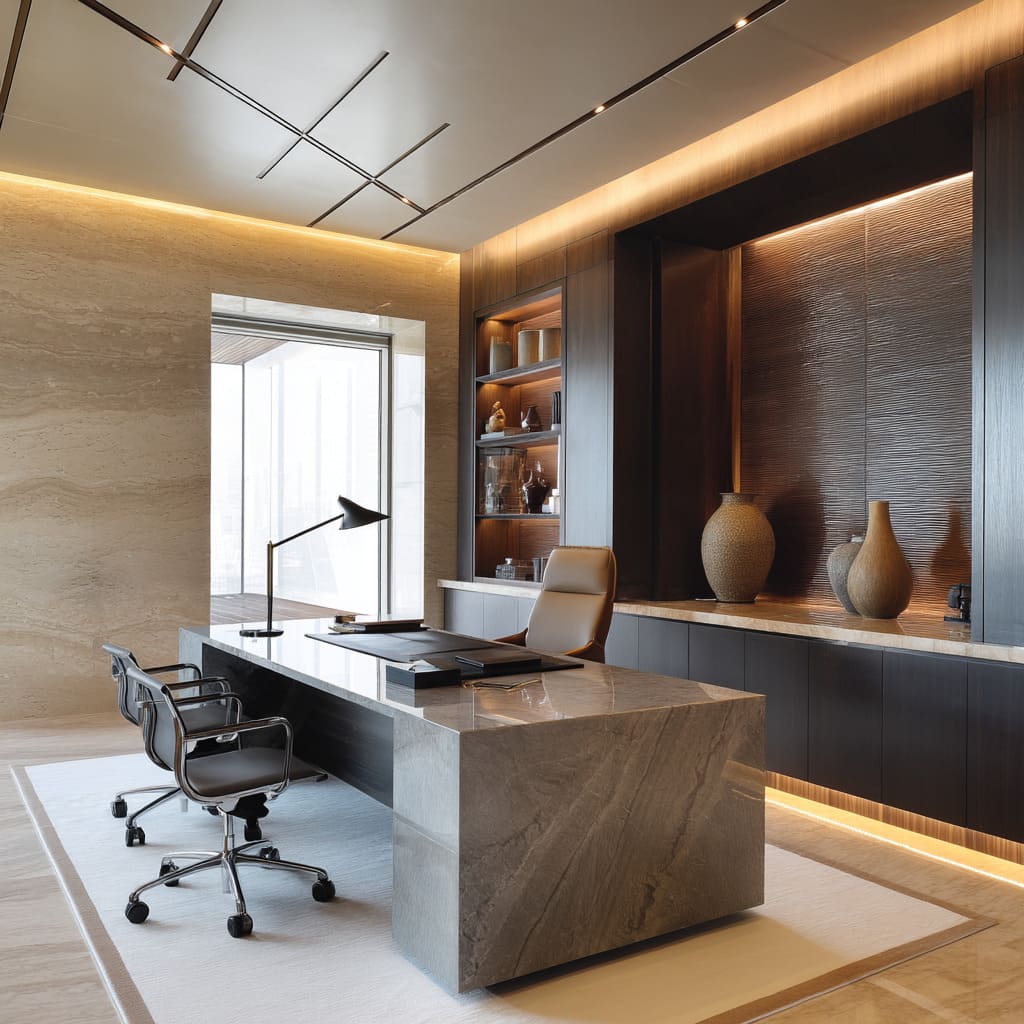
Vertical Rhythm Signals Thought Discipline
Fluted wood, ribbed wall panels, even brass strips recessed into wall facades—all these vertical patterns serve a purpose beyond surface texture. They introduce a visual rhythm that brings order to the room. Lines moving upward give height, calm the eye, and subtly enforce a sense of logic and balance. In many cases, lighting is integrated into these grooves, reinforcing the alignment and creating soft shadows that shift through the day. These small repetitions build an atmosphere of focus, control, and precision—an ideal setting for complex executive decision-making.
Floating Forms Suggest Forward Thinking
Designers use elements that hover, rather than sit: floating sideboards, suspended lighting, even levitating desk components. These choices create a feeling of movement and lightness. Without saying so, they hint at innovation, clarity, and adaptability.
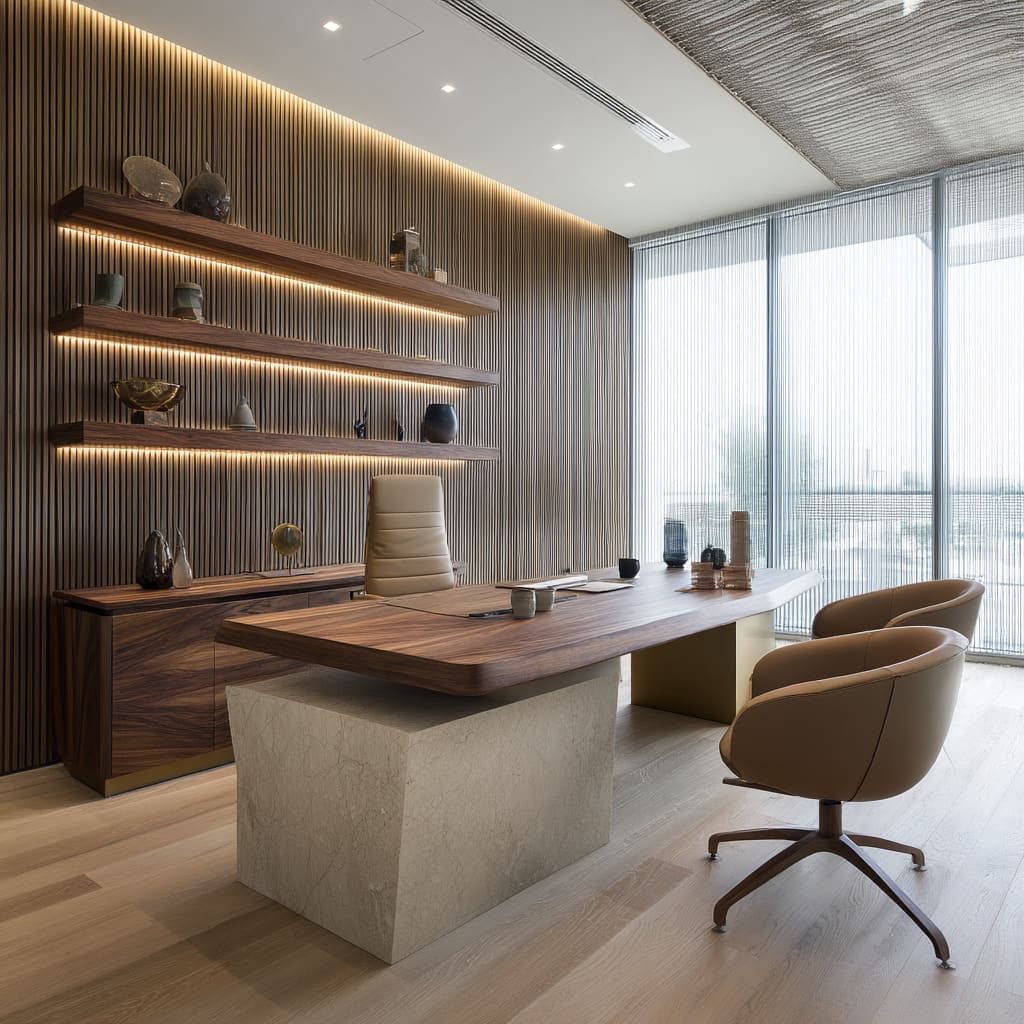
Final Thought: The CEO Office in Dubai
These rooms don’t just contain work—they express leadership. In Dubai’s competitive corporate landscape, a CEO office is a statement made in silence. Every material, every alignment, every shadow plays a role in shaping how others perceive the person in that chair. The design is calculated, but it doesn’t feel forced. It’s a constructed persona—one built from balance, authority, and awareness of global influence.
This is why Dubai office design doesn’t follow fleeting trends. It draws from long-standing architectural discipline, blends it with regional aesthetics, and adapts it to how CEOs want to be seen today. A successful office in this context works in three dimensions: it must function logically, feel comfortable emotionally, and read correctly at first glance.
